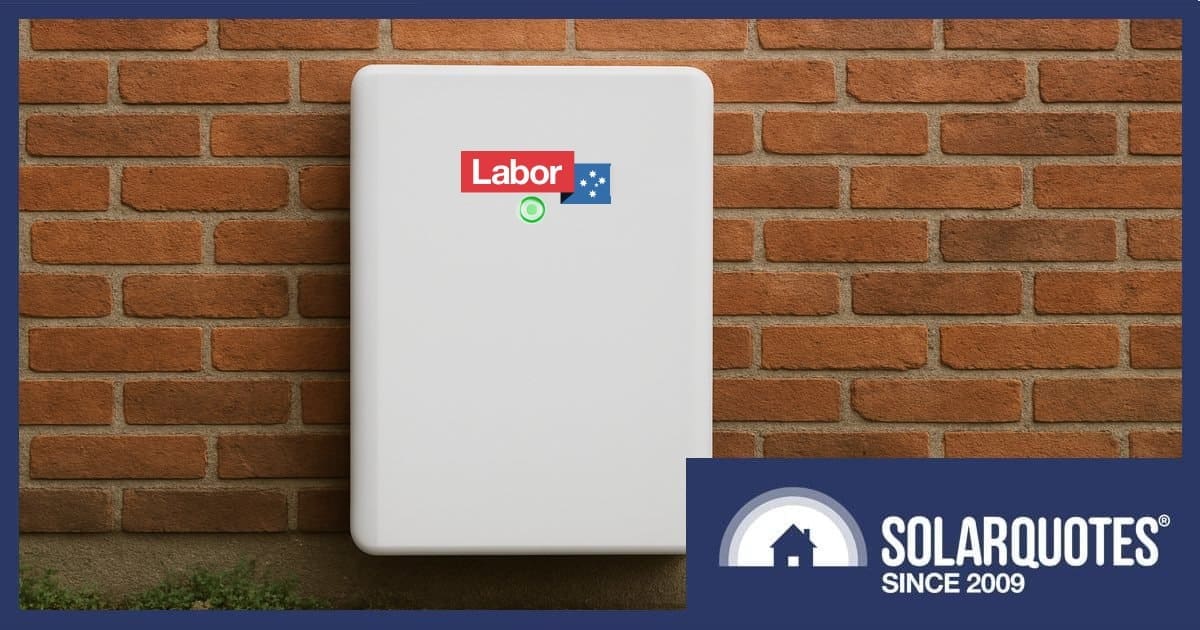 Labor’s election win means its $2.3bn Cheaper Home Batteries Program campaign promise is set to become reality. But which are the best brands to get under this new battery rebate, and how big are the savings?
Labor’s election win means its $2.3bn Cheaper Home Batteries Program campaign promise is set to become reality. But which are the best brands to get under this new battery rebate, and how big are the savings?
Using SolarQuotes’ Federal Government Battery Rebate Calculator, here’s the estimated rough discount for the best battery brands in Australia in 2025, as voted by our network of installers.
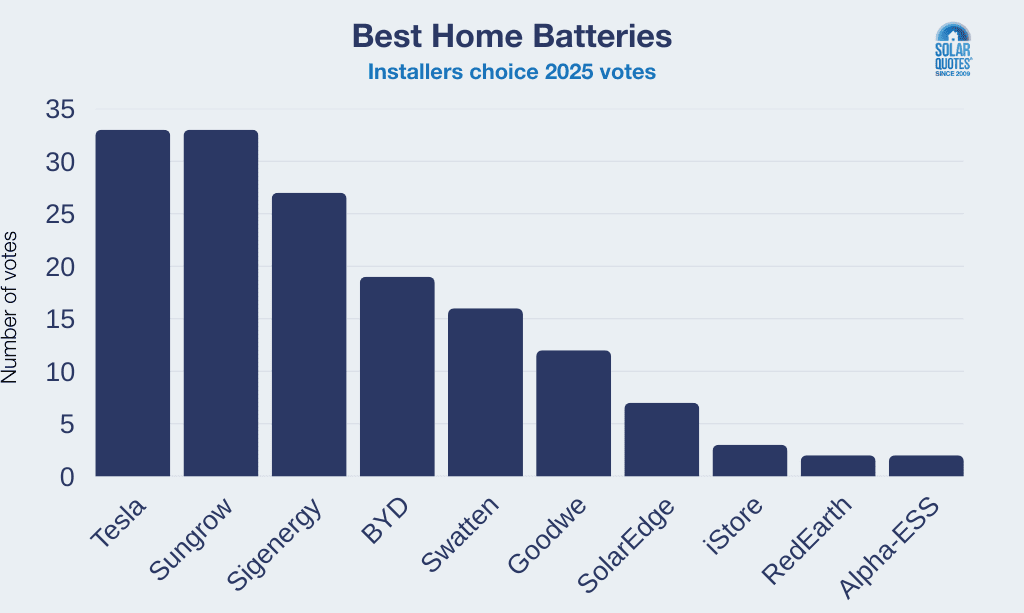
The results of SolarQuotes’ Installers Choice Awards 2025 for best battery brand.
The estimated savings listed below are a rough guide only and exclude installation prices, which depending on your property and requirements could be around $2000. The value of the rebate is also set to depend on a fluctuating STC price, which we’ve put at $36 per STC for the purposes of this piece.
The finer details of the rebate itself are still being hashed out and it is only due to come into effect July 1, although you can claim it for batteries installed since the announcement of the rebate on April 6, as long as you the battery isn’t turned on before the start date of the scheme.
These savings also don’t include the financial benefits of double-dipping with state battery incentives.
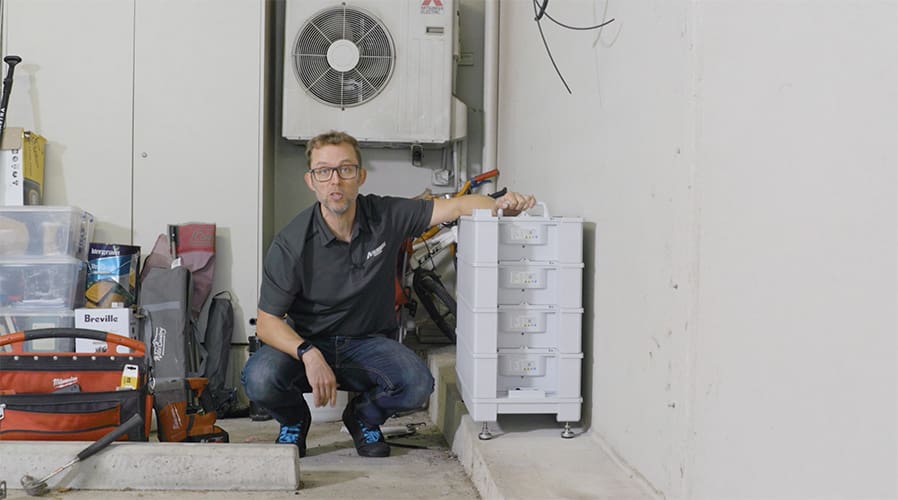
The Sungrow battery offers the benefit of modular design, and can be expanded in 3.2 kWh increments.
Sungrow SBR HV
In equal first place in our Installer’s Choice Awards for Best Battery, Sungrow offers a rare combination of relatively low price and high-quality hardware with excellent tech support. Reviews on the SolarQuotes website for Sungrow batteries average an impressive 4.8 out of 5 star rating.
The Sungrow SBR HV is modular and so is available in a range of sizes. For this article we are assessing the 12.8 kWh version, for which you can expect the rebate to shave roughly $4,068 off the cost.
This takes the overall estimated retail cost from $9,500 down to $5432, not including installation.
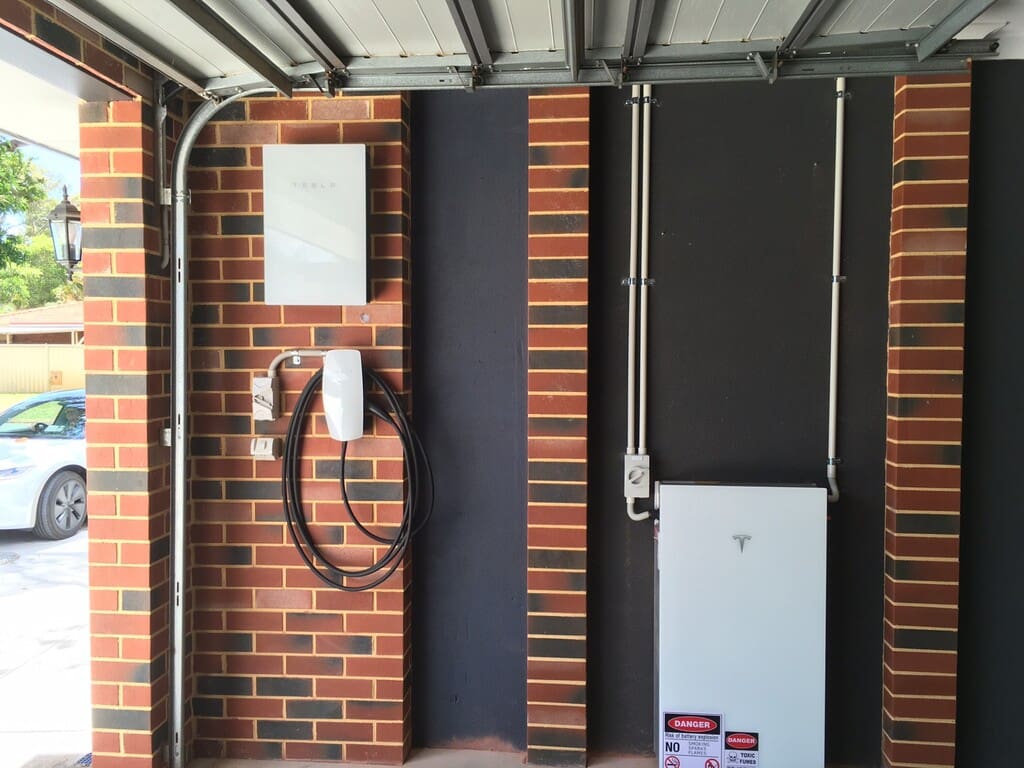
The Tesla Powerwall 3 is a higher-cost option that has proved popular with users.
Tesla Powerwall 3
The other brand sharing the podium in top spot is Tesla, which has a good track record of providing reliable batteries and excellent customer service, explaining why they enjoy a strong rating of 4.9 out of 5 stars among SolarQuotes reviewers.
The company’s latest home battery is the Powerwall 3, which unlike Sungrow’s modular offering is fixed at 13.5 kWh of usable storage. The rebate should cut roughly $4,500 off the cost.
That takes the $13,600 estimated retail price down to $9,100, excluding installation fees.
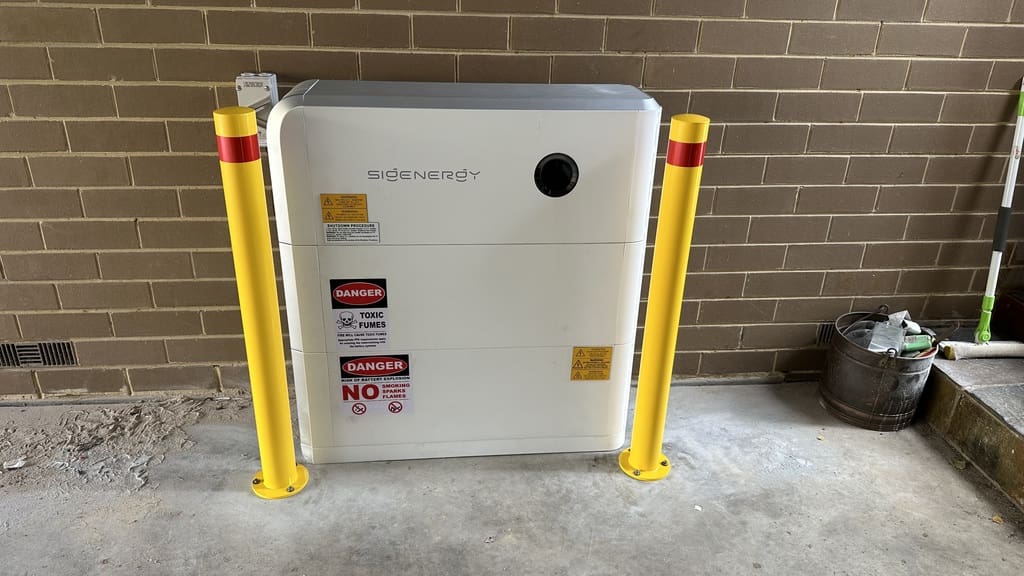
Sigenergy is a relatively new arrival in the Australian home battery scene, but is growing quickly in popularity.
Sigenergy’s Sigenstore All-In-One
Only founded in early 2022, Sigenergy is the new kid on the block in terms of solar batteries but has already had a huge impact, with our installers rating it in second place in 2025 for its battery offerings.
Averaging 4.9 out of 5 stars on the SolarQuotes review hub, Sigenergy seems to be winning Australian hearts and minds with their all-in-one product offering, which can also include an optional 25kW bi-directional DC EV charger. For the single-phase 13kWh battery, the rough estimated rebate is $4,320.
That takes the $11,500 estimated retail price down to $7,180 excluding install costs.
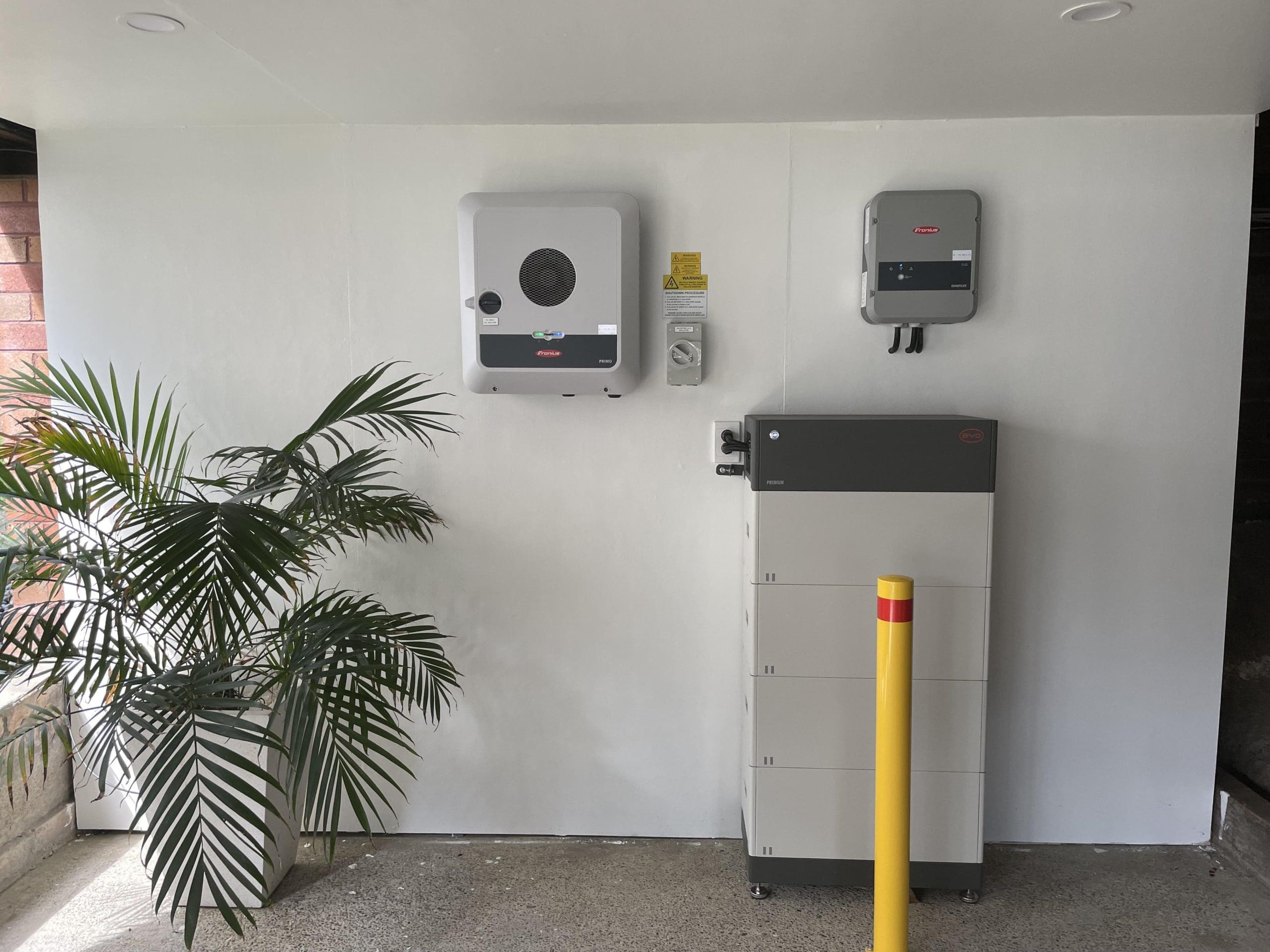
One of the advantages of BYD batteries is that they play nicely with high-quality Fronius inverters.
BYD HVM
BYD landed in third place among our installers choices. One of the advantages of BYD is its partnership with Fronius, who produce some of the best inverters available.
BYD batteries are designed to DC-couple with Fronius’ latest Gen24 inverter range.
SolarQuotes reviewers have rated BYD batteries an impressive 4.9 out of 5 stars.
For a BYD HVM (13.8 kWh), the rebate should reduce the cost by roughly $4,608.
That whittles the $10,600 estimated retail cost down to $5,992, not including installation.
Next Steps
So there you have it: how much the battery rebate could save you on the brands most highly recommended by our installers — use the calculator yourself for your preferred battery brand and size if it wasn’t mentioned here, and see the estimated price for those batteries before applying the rebate in our comparison table.
That link to the table also takes you to a comprehensive guide on all the aspects to consider when deciding whether to purchase a battery: cost is only one factor, and just because getting a battery is now cheaper doesn’t necessarily mean it is right for your circumstances.
For more on what we know about Labor’s battery incentive, check out our explainer page.

 RSS - Posts
RSS - Posts


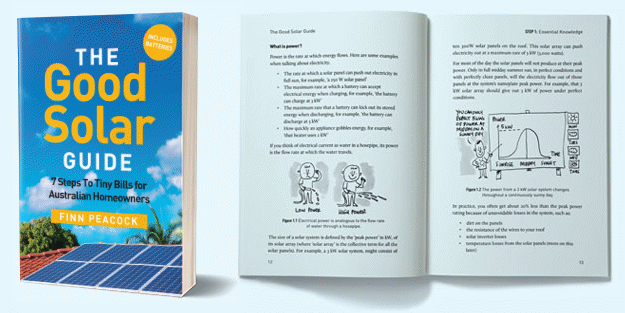
For cuatomers in NSW can this be combined with the NSW state battery rebate? Be good if the article could also show the impact of state based incentives.
Hi Richard – Labor has said they intend for it to be able to be combined with state incentives (like the NSW battery rebate), but there are some potential complications, including a need to change the rules for the NSW scheme. You can use our NSW battery rebate calculator and add that to the savings listed here to see how much cheaper that would make your preferred battery if they clear up those issues.
Ok thank you.
I was very easily convinced to buy solar panels simply because those panels paid the loan! The savings were so large!
The 10 KW Sungrow battery we had installed was done only so I pay a green loan and not an energy retailer, it costs us money, and honestly, we would need another 30-40 KW’s to make it work for us. It isn’t going to happen soon, rebate or not.
I’ve done the sums so many times to justify (to the wife) getting a second Powerwall. But unless we’re looking to sell into the wholesale market through Amber, it’s not really a goer, even with the rebate. And even then it’d be a marginal thing.
One Powerwall does everything we need, we rarely need to draw from the grid and now with super-cheap and even free retail rates at certain times of day, I’ve found it preferable to use the existing Powerwall to tap into those, than buy a second one.
It’d be nice if rebate programs rewarded early adopters for once, with retrospective claims!
That’s silly. The early adopters prove it’s worth having a program. The subsidies help accelerate uptake, and tip over those who are on the fence.
Real life example:
Fully installed cost for 24 kWh of Sigenstor batteries for us will be ~$6k.
Batteries ~$17.3k (fully installed price)
less
NSW PDRS ~$3.3k (only applies for batteries up to 28 kWh)
STCs worth ~$8k
————————
Installed cost ~$6k
Already have the Sigen hybrid inverter, gateway and PV, which I’d need anyway for export limitation.
Installer just waiting for final details on the federal scheme’s operation.
Yeah wow, that is amazing 👏
I’m just getting a full system priced up as we speak for our new home.
Guess there is merit staying under 28kw if we can add V2G later on Sigenergy system.
I’ve just been quoted $16k plus, after the new rebate, for a 24kwh Sigenstor from my solar provider in Canberra! Where do I go to get a quote like the one Alex has got (noting that his total includes the NSW Govt rebate as well)?
My quote today from Penrith Solar Centre is $10990 for 24.1KW sigstor
$10.99 k for a 24 kW inverter and corresponding solar panels.
Thanks Ian, I’ll give them a call!
Hi,
Was this single or three phase? What size inverter?
Like the previous poster, I got a quote for $17k+, after the fed rebate (15kWh inverter, three phase, 24kwh battery, fully installed)
Thanks
this was for 3 phase, a 10 KW inverter. As you probably know the state rebate can now not be used. My state rebate in that quote has to be returned( $4000). Penrith Solar centre have offered to install an additional 8KW battery to the existing 24KW battery already installed for another $1000, so return of NSW rebate + additional 8KW battery =$5000
I think I read an article here saying the Sigistor install time was two hours!.
The installed price will end up being the deciding factor for consumers and if we can get anywhere near $500/kWh installed this should be a very successful policy.
I wonder how many Croweaters on the Premium FiT are thinking about a second array with an off-grid battery (capable of being on a VPP)
I expect/hope by July 2028 battery prices will be much lower than today. This policy should accelerate that fall, after the initial surge.
If I’ve already got Enphase microinverters on my solar (because of the shading of trees across the day) and my house has 3 phases (with the microinverters spread across the 3 phases), what are my choices for battery?
Any advice?
I have a similar situation and have a Powerwall 2 installed on one phase and all my backup circuits on the same phase. It works great.
Unfortunately, Powerwall 2 is discontinued, and Powerwall 3 is designed for DC systems with its own solar inverter. It can be AC coupled, but then you are paying for a 10 kW solar inverter you’ll never use.
The obvious choice is an Enphase battery, but they are ridiculously large (physically) and very expensive for only 5kWh per unit.
So I’d look for an AC coupled battery on a single phase. Sungrow and Sigenergy can be AC coupled. I’ll ask Anthony to do a post on this..
VoltX NeoVolt is also AC coupled. Limited to 5kW output continuous so only good for about 2 backup circuits but very cost effective IMO.
Hi Nick
I think they’re known in the trade as a “blue alpha”
In many cases, poor people pay twice.
https://www.solarquotes.com.au/blog/alphaess-battery-warranty/
THEY WONT PAY TWICE IF YOU BUY FROM A REPUTABLE RETAILER THAT WONT GO OUT OF BUSINESS….. if you buy from Joe blow then yes you might be at more risk ….
Yes please. It’s exactly my situation too.
They may be discontinued, but there’s still ‘some’ Adelaide installers with stock of the PW2.
Thanks Finn.
Yes, please my situation too.
This is my situation too. My plan is to get a 3-phase Sigenergy battery AC coupled to the Enphase solar. This should provide full 3 phase backup.
TBD is whether I need to add any new panels to the Sigenergy inverter so the Enphase system can be black started in an outage situation.
I’m getting quotes at the moment so I can’t say it’s done and working yet.
I am in the exact same situation. This thread suggests it is possible, even with iq7s (me) / black start capability:
https://www.reddit.com/r/enphase/s/QQIKi09xlk
A question – as an existing owner of a Sungrow SBR system with 4 modules, could this rebate be used to add capacity to the existing stack? (i.e. increase capacity from 12.8 to 25.6)?
Good question – what we know for sure is owners of existing battery systems can install another and be eligible.
As for whether that applies to adding a module to an existing stack, I’d say it’s likely because Sungrow meets the other requirements: it is on the list of approved batteries and can be connected to a VPP in the future.
I’ll ask the team to double check.
Don’t forget the 15yr warranty
I have asked this question too for NSW battery rebate but the answer was no. 12.8 kwh battery is good, but 2 more modules would be great!
Absolutely interested in this question too. From a 3 phase Enphase setup handling several complex rooflines with some partial shading on some means the micro made sense but it sure makes the battery side more complex.
Hi Adam,
Just about any 3ph hybrid can be set up to use your legacy solar as a downstream AC coupled generator, except Fronius, sadly the Austrians don’t play well with others.
Just depends on the DNSP connection limits in many cases.
Enphase batteries are a bit pointless sadly, as they have too little storage and the inverter capacity eats up your total allowable connection. And the price is eye watering.
I installed an Alpha Ess 13KWH about 6 months ago (after the NSW rebate came into effect), and are very happy with it, despite you putting it in the not recommended class. The only thing I am annoyed about is that I did not wait for this rebate.
A summary table of costs and discounts would be helpful, and ideally a flag for those suitable for use with Microinverters
Hi, My solar installer recommends REA Powerbank batteries. I haven’t been able to find many reviews of these batteries. Do you have any reviews that might be helpful?
Stephen
We don’t unfortunately, although we have reviews of the REA Solar company behind the product. If you do go ahead please leave a review of the battery so we can start to build a picture of how it is performing for people.
Isn’t there a new BYD battery , hybrid inverter all in one package coming soon? Any idea on the release date and whether these are coming? Will be installing in about 12 months or should I just try get the best quotes on the BYD / Fronius Combos?
Intending to install on 3 phase so I can best utilise the ovens, induction cooktop and A/C in summer or is it too cost prohibitive to try run it on all 3 phases?
I’m worried that if I’m running high loads in peak summer during peak times I will be using too much grid energy at the highest 0.51c / Kwh is all.
I too am hoping the new BYD inverter and battery combined will make it to Aus. Would certainly make it a lot simpler with DC Coupled charging for new installs! Link below if you allow outside links 🙃
https://www.ess-news.com/2025/03/18/byd-launches-its-first-integrated-home-storage-system/
Last time I looked, battery installs are not eligible for Small Technology Certificates (STC)
Hi David,
That’s about to change and it’s a stroke of genius because it means all the administrative infrastructure is in place, well understood and already functional.
Change the regulations and off we go without new legislation.
Installed a Sigenstore 16 KWh battery system to my 11Kw solar panels a month ago.
3 phase system system with full back up if supply from grid interrupted.
Room to add more panels if deemed desirable.
Originally looking for 13Kwh battery, but not much dearer for the extra capacity.
So far have not got battery any lower than about 20% and supplying all our needs but have not run sprinkler system since installed – 2 kw submersible.
What battery system would you recommend for a 3 Phase 20kw solar system? Thanks
Hi Robert,
Hard to tell without knowing more about your house. Sungrow or GoodWe will do that capacity with all your house loads downstream of the unit as a series hybrid. Sigenergy will work as a parallel hybrid, as will Fronius with a limit of 18kW of Solar.
Best get some quotes and ask for a site visit in the notes at the end.
I have a 16kwh with 10kw inverter sigen system. If i want to go to 40kwh, how does that work? I already claimed NSW one. Can I do fed one for the last 24kwh?
Pls explain
Hi Shane,
The answer is probably.
We have heard a webinar discussing it today and will have an article soon.
Our gas hot water system died ‘unexpectedly’ last year after ~30 years. We put in a new heat pump and oh boy I was in a big shock after a few months. We are paying $0.22/day for gas as opposed to ~$5 a day. And in winter was more than $10 per day with central heating as well.
I’ve just signed a contract for 11.7 kWh Jinko PV, Sigenergy 3×8 kWh battery, 10 kW inverter and an AC EV charger. We also have a 12 years old 5.4 kWh PV which will be AC coupling into the new system. Our set up cost is ~$18K, we will be out of pocket ~8K plus ~$230/month to the state for 4 years. The total system is ~30K before rebates.
We will be using split system for heating this winter and should be self sufficient overnight with those batteries. By my calculations, we should get money back in under 10 years. My advice to everyone is ditching your gas appliances and get onto this new federal rebate ASAP.
Thank you Albo. 😄
There’s a bug in your Federal Government Battery Rebate Calculator – the rebate for a Sigenergy 24kWh 3 phase battery is way too low
Thanks for flagging this Russell – we’ve fixed that issue. The rebate should be roughly $7,812.
Do your cost estimates all include an inverter?
They do not, aside from the batteries that include an integrated inverter, such as the Powerwall 3.
With the discount supposedly being 30% –
“The Cheaper Home Batteries Program starts on July 1st 2025, and provides an up-front discount on the purchase and installation of home batteries. It’s expected to lower the cost to households by around 30%. ” – https://www.solarquotes.com.au/battery-storage/federal-rebate/ and, with the Sigenergy Sigenstor 12S-48 comprising of the inverter and the battery stack (48kWh), as a single unit – https://www.sigenergy.com/au/support/files/731 – the whole unit being 1990mm tall, I am wondering whether the 30% discount applies to the whole unit, for which, the discounted price is of interest. I am also wondering, with the inverter sitting immediately on top of the battery stack, so that the top item is the inverter and not a battery module, what is the required minimum vertical clearance for installation, between the inverter and an eave.
Still not worth it.
I want a battery, but not at these prices. There’s no payback period.
Once they sort out vehicle to load properly, and I can buy an EV with a 40-50kwh battery which gives me a pretty much unlimited supply of of power, AND I drive around in it, that’ll be the go.
I am curious as to why the Sungrow SBR is preferred, and not the SBH. I think that a comparison would be good.
I note that, according to the compatibility document, the largest capacity SBR BESS that is compatible with the Sungrow single phase hybrid inverters, is 19kWh, whereas the largest capacity SBH BESS that is compatible with the Sungrow single phase hybrid inverters, is 25kWh.
The price gouging has started. My previous supplier upped the price of their Tesla Powerwall battery by $2k between last week and this week, so I am unable to access the ~$4k discount offered by the government. So almost immediately this program is not so much about making it more affordable for home users at all.
Curious where the estimates are coming from? Currently shopping around for quotes for a battery for the solar set-up. Getting back a quote of $17,500 in Brisbane for 5kW Fronius Primo GEN 24 Inverter and 13.8kWh BYD HVM Premium Battery installed over an existing set-up. Another for $17,900 for the same but with a 6kw Fronius Gen 24 (no solar panels, they are already in place on an older Fronius inverter) . So both are about 12.5k after rebate.
My question is, are these prices comparable to the quote before the solar battery rebate was announced, or are they being marked up to absorb the rebate? Is it a factor of the Brisbane market? Are installers upping prices to absorb the rebate???
Would love to check recent quotes of others for a simpler set-up to keep an eye on how the retailers are responding to the rebate and ensure it’s the consumers that are getting it, not the retailer.
– 5kW Fronius Primo GEN 24 Inverter – what about the roof top solar panel size in kW ?
– 13.8kWh BYD HVM Premium Battery
As a rule of thumb could say the price installed is
– $1 per W for the inverter and panels at 5 kW (say) = $5k
-$1 per Wh for the battery @ 13.8 kWh = $14k
– total = $19k, baring any minor electrical work eg new RCD locations/ board upgrade to spec.
I’ve just been quoted a Sigenergy 3 phase battery system 16kWh for around $18.5k before rebate or 24kWh for $23k.
So that makes them around $12-13k for the 16 or $15k for the 24 with the proposed rebate applied.
That is purely battery and associated elements adding to an existing system. Seems like the pricing is decent, maybe slightly increased to allow for demand.
Disclaimer: That is also the cash price, financing is a little more of course
Hi Brains Trust,
With the new incentives fast approaching, I would love pick your brain. We currently have a 13.3kw Solar System with a Gen24 Fronius Hybrid Inverter and it works great, we also have a Tesla Model 3 and a KIA EV5 (so two hybrids) and live in South Western Sydney (Endeavour Network).
We are looking at taking advantage of the new battery rebates and are looking at the Sigenergy 24KW 3 phase battery (we like the idea of a modular battery so we can expand our storage and potentially purchase the DC charger, we currently have the Gen 3 Tesla Wall Mount Charger).
Our major concern is that we already have an excellent inverter and don’t know how it would work with the above battery as it has its own inverter. If we were to proceed with the Sienergy 24KW 3 phase battery, would that be a mistake? If we did purchase it, we would probably move to Amber and the wholesale market.
Additionally, what batteries would you recommend for our 3 phase system?
Thank you in advance :-).
Just been quoted $9990 for the 16kw, and $10990 for the 24kw battery set up with the July rebate through Penrith solar.Sigeenergy.
Looks like Penrith Solar is the place to go – thanks very much for this.
Fantastic company, did my system. They offered me $8900 for an additional Powerwall 2, to add to our existing one. Great price but i can’t really justify it, what we have already covers all of our needs really. What’s shifted in the time since we had everything installed is the availability of cheap (or free) retail electricity, which I now charge the Powerwall with in winter as well. It’s like having an additional battery already.
Can you please clarify the pricing in the Battery Storage Comparison Table?
SigenStor Single-Phase (8 kWh) @ $5,000
SigenStor Single-Phase (16 kWh) @ $7,200
SigenStor Single-Phase (24 kWh) @ $9,378
I know it’s only indicative, but I’ve been unable to find any references to a 24kWh stack costing less than the price of three 8kWh modules.
Prices on table are inclusive of federal battery rebate 🙂
Pre-rebate, 24kWh of Sigenstor batteries with a 5kW single-phase inverter module is around $17k. 24kWh of storage attracts approx $7800 in rebate. Equalling approx $9400.
I have just received 2 of the 3 quotes from your site, both are recommending big batteries, 24kwh Sigenergy and 25kwh Sungrow, is it worth while paying extra for the bigger battery capacity? I have a 10kw solar system on the roof
Hi Roy,
I don’t expect you’ll regret a decent sized battery but it really depends on your consumption patterns.
Adding more solar is always a winner in my opinion, a new hybrid in addition to your existing one may be a good option.
Have you tried our calculator?
https://www.solarquotes.com.au/battery-storage/calculator/
Hi Anthony
I have Sun Grow High voltage batteries ie 4 and each one is a 5kWh so I have a titch over 20 kWh all together. But I keep noticing you state 3.2 kWh Sun Grow Batteries.Is this because the newer % kWh isn’t available or is there just so many 3.2 ones in stock about?